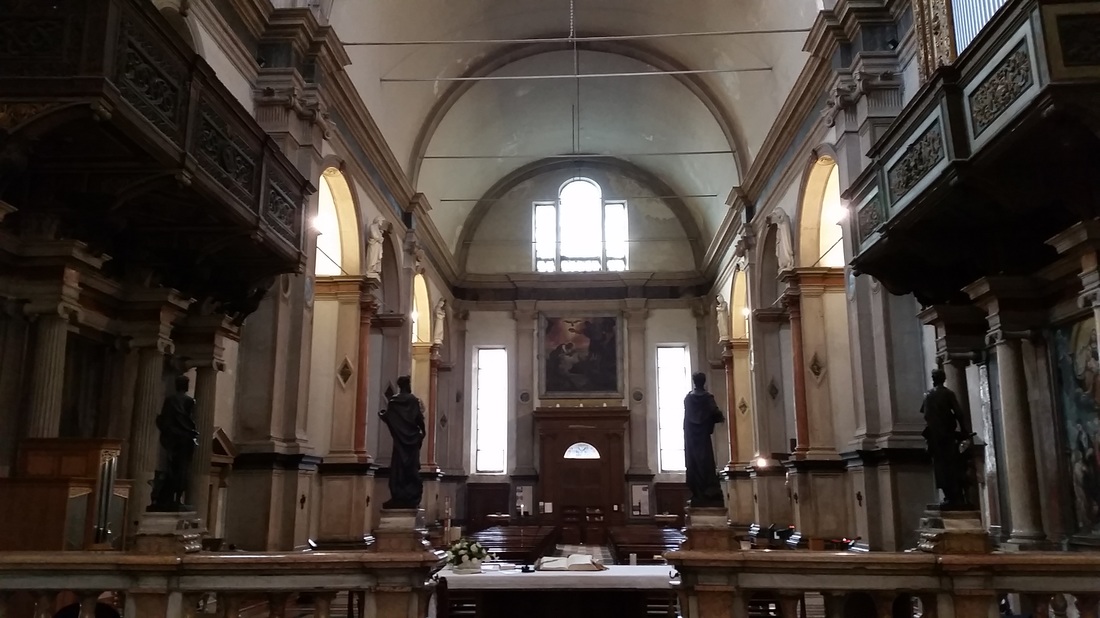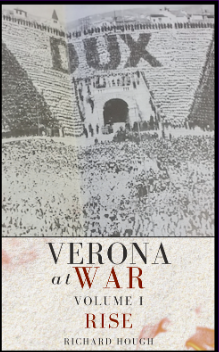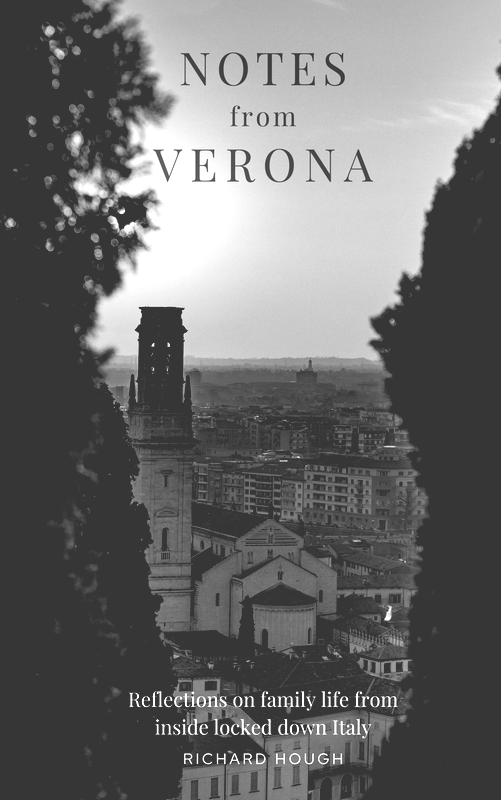|
One of the challenges of living in a place like Verona, is that visiting guests often expect you to be an expert. On everything. Local art, architecture, history, wine, food, football…. All too often I have to plead ignorance. Or, increasingly, I just make something up... “Oh that’s the Church of the Sacred Lady of the Apples. It was built on the sight of an ancient apple tree that was destroyed in the great storm of 1477. Ever since, on the 13 April each year, the people of Verona eat an apple to commemorate that sacred tree.” Wow, reading that back now it sounds kinda plausible ! While spinning such lines to gullible visitors might be amusing, after four years of living in Verona, I’ve decided it's time discover some of Verona's most important treasures and to fill some of the gaping voids in my knowledge of city's incredible art and architecture. But where to start? Cycling to one of my regular clients, my route takes me along the banks of the Adige, past the medieval splendour of the church of San Giorgio in Braida, up a slight incline, the Roman bridge Ponte Pietra on my right, Teatro Romano on my left. A slight downhill now as the road widens, then reaches a fork. I’m usually too concerned with safely navigating the early morning traffic to admire the statue in any great detail, but it's impossible to miss. An elongated face with a full, well-groomed beard, an Elizabethan ruff, and a rather large medallion. Dressed in a artists smock and short toga, he is holding in one hand a paint brush and in the other a palette. He is, of course, Paolo Veronese, Verona's very own master of the Renaissance. A week later I pass again, this time at a rather more leisurely pace. Pushing a pram instead of riding a bike, it’s a bright sunny afternoon in late summer (or early autumn if you’re Italian) and today we’ve decided to go in search of Veronese. My companion for the day seems blissfully unaware of the days itinerary, but he appears to be alert and interested as we admire the imposing statue before us. Suitably impressed by the statue of Veronese, we retrace our steps, in search of one of the artist's most revered masterpieces. Hugging the banks of the Adige (on the northside of the river between Ponte Garibaldi and Ponte Pietra), from afar the graceful dome and prominent bell tower of the Chiesa di San Giorgio in Braida form part of Verona's remarkable skyline. On closer inspection the church is actually a confusion of several interconnected buildings. We approach the marble white facade at the front of the church, pass under a fading statue of St. George and enter through the main door. Inside, the church is well lit but completely empty. The lingering smell of incense a poignant reminder of the funeral that took place here earlier this afternoon. A full lunch and the air of complete tranquility are too much for my young companion and he's soon fast asleep in his pram. Taking advantage of this fleeting moment of tranquility, I leave him at the transept and climb the steps into the famous apse of San Giorgio in Braida. On either side, two enormous frescoes: the Multiplication of the Loaves and Fish by Farina and Manna in the desert (manna was the mysterious food that God gave to the Israelites during their 40-year wandering in the desert) by Brusasorzi. Their sheer scale is overwhelming. But it is the smaller picture above the high altar that we have come to admire. This is Veronese's masterpiece - The martyrdom of Saint George. Veronese captures the scene as Saint George is to be beheaded for refusing to denounce Christianity. The brave soldier is surrounded. On one side stands a hooded priest, on the other the executioner, sword in hand. Above, in a bank of fluffy white clouds the Madonna, Saints Peter and Paul and the cardinal virtues Faith, Hope and Charity are waiting for the arrival in heaven of the soon to be martyred saint. Heading back towards the main door, I peer up to admire the Baptism of Christ by Tintoretto, before exiting the Church into the bright afternoon sunlight.
Even to an atheistic philistine like me, Veronese's masterpiece is a wonderful piece of art in a profoundly atmospheric setting. It's well worth a visit. Meanwhile, my companion sleeps on, blissfully unaware that he has been in the presence of true genius, and I go in search of the nearest bar! |
AboutRichard Hough writes about history, football, wine, whisky, culture + travel and is currently working on a trilogy about wartime Verona.
|












